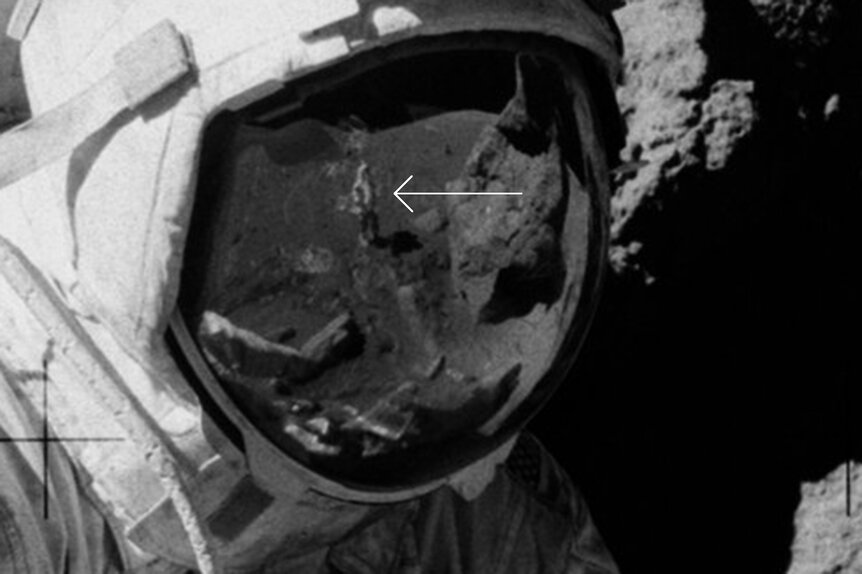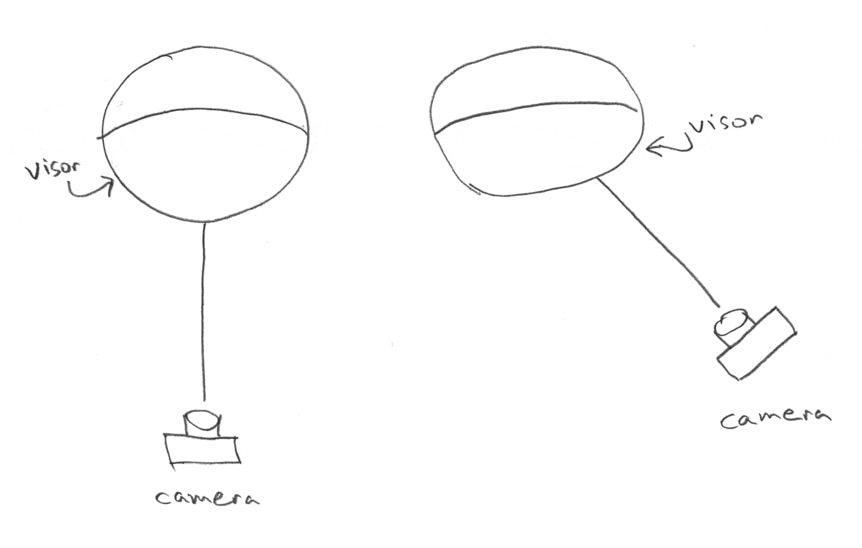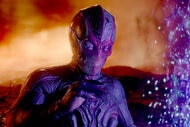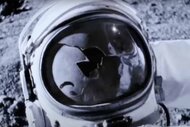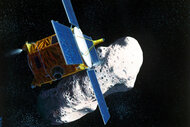Create a free profile to get unlimited access to exclusive videos, sweepstakes, and more!
No, that's not a stagehand in an Apollo astronaut photo
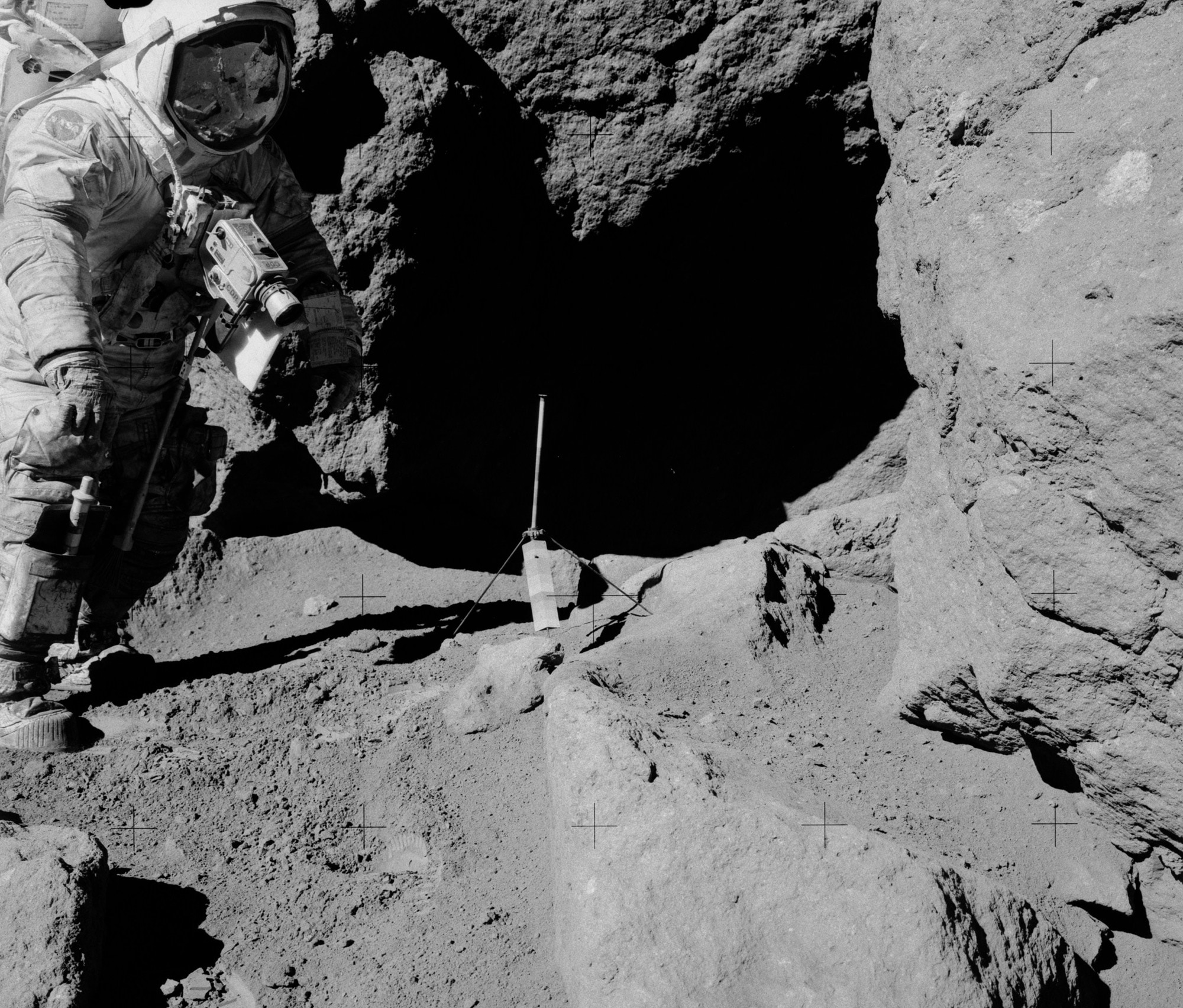
Let's get this out the way quickly, OK? Yes, we went to the Moon. No, NASA didn't fake it. At this point, anyone who claims otherwise can be safely dismissed as a crackpot.
I say that as someone with a substantial amount of experience dealing with Moon Hoax Believers. I got involved with looking into this conspiracy theory back in 2000 or so, did a lot of research, and wrote a lot about it. A lot. I was one of the very first people to have a webpage up debunking these ridiculous claims, in fact. I have seen essentially all the evidence these folks provide, and in every case — and I do mean every single case — their "proof" boils down to misreading photos, misunderstanding science, misunderstanding engineering, misunderstanding politics, and/or outright deception in order to mislead the public.
And it doesn't seem to die. I was checking Facebook Sunday, and saw I was tagged in a post by Evan Bernstein, from Skeptics Guide to the Universe. Dreading what I'd see if I went to the page, I clicked the link anyway. I can't help it. Bad astronomy is like catnip to me.
I wasn't disappointed. Evan had a link to an article in Newsweek — Newsweek — that is a credulous account of a guy on YouTube who calls himself Streetcap1. This particular video shows an image from the Apollo 17 mission, which landed two astronauts on the Moon in December 1972.
The astronaut in the picture is Gene Cernan. The device next to him is called a gnomon. It was used to measure the slope of the surface, and also had different colored and shaded patches on it to judge the same characteristics of rocks around it.
What caught Streetcap1's eye was a reflection in Cernan's visor:
That's clearly the figure of a human. I think we'd all agree on that. Where I part ways with Streetcap1 is that he is guessing that's a stagehand or someone else standing there when this photo was taken. In his video he points out features he thinks he sees on the figure, including — and I swear I'm not making this up — long hair. Because this was "back in the early '70s."
Yes. He said that.
What I see when I look at the figure reflected in the visor is … another astronaut. Specifically, Harrison "Jack" Schmitt, a geologist. In fact, Schmitt was the one who took this photo! You can actually see this for yourself. The spacesuit visors are curved. The way a curved reflector works is, the person taking the photo will be seen to be reflected in the visor at the spot tangent to the angle they're standing. I made a really fast (and terrible) drawing to show this.
On the left, the camera (and the person holding it) will be seen centered in the astronaut's helmet visor. On the right, the camera and astronaut will be seen centered off to the side of the visor.
Now look again at the actual Apollo photo. Schmitt can be seen reflected at exactly the spot you'd expect him to be in if he were the one taking the picture. Because he was. Because he and Cernan were on the Moon.
The details match as well. Schmitt's shadow stretches off to the right, because the Sun is on the left. His legs are darker because they're in shadow. He's turned toward Cernan to take the photo, and is lit from an angle, so we see the front and sides of the suit lit. Same for his helmet and visor. That's not long hair: It's the outside of his helmet. I suspect the lumpy shape at the top of his shadow is the shadow of his "backpack," the Portable Life Support System on the back of the spacesuit. Certainly the shadow is far too wide to depict a person standing there without a spacesuit.
So there you go. It's really that simple. I'll note that I looked over more of Streetcap1's videos, and they're the usual sort of breathless conspiracy stuff. He overmagnifies images (which creates artificial blockiness and lighting issues) and then claims to see "cities" on the Moon or "habitats" on Mars. It's nonsense.
So he looks at a photo of an astronaut on the Moon and sees stagehands. I look at a photo of an astronaut on the Moon and see … an astronaut.
It's a gorgeous photo, as so many from Apollo were. It also shows lighter colored inclusions in the rock fragment, pieces of other minerals trapped in the rock when it formed. This sort of thing makes geologists very happy, since inclusions like that can tell them a lot about how the rock formed, where, and under what circumstances. And this was on the Moon, where we hadn't had close-up photos before. The Apollo photographs from the surface of the Moon were, still are, and will remain to be one of the most important scientific achievements of humanity's space exploration.
This kind of stuff from people like Streetcap1 irritates me for a lot of reasons. This sort of thinking and conspiracy-mongering degrades people's ability to think critically. The past couple of years watching Donald Trump have shown us where that leads. We have experts for a reason: They have devoted years, sometimes their entire lives, to studying and understanding phenomena, and then some person with essentially zero experience or understanding of the imagery comes along and says some obviously ridiculous thing, yet gets people to believe them. I'll note that as I write this, the video has well over 300,000 views.
And it denigrates science. It demeans one of the most amazing challenges humans have ever undertaken, one of the greatest accomplishments in our history.
Perhaps even worse, it's painful to see a magazine like Newsweek promulgate such nonsense. I'll note that in the article the writer didn't seek out any expert advice, despite a dozen people who could be found easily using a Google search. I'm one of them, and it took me literally three minutes to figure out exactly what's what in this photo. So yeah, it's irritating (though I'll very grudgingly give Streetcap1 one small piece of credit: He at least links to the original image; most conspiracy theorists don't, which should ring very loud alarm bells).
If there's a lesson to be learned here, it's that this little episode shows how flawed humans can be, how easily we can be swayed by the flimsiest of claims. That is part of our nature … just as it's part of our nature to seek out truth, to investigate the unknown, and to explore it. And while critical thinking and judicious skepticism are harder to implement, and may not be part of our nature, I'll remind you that we invented science. We recognize that we can be fooled, and we created an entire field of thinking and investigation to minimize that issue.
And the beauty is, it works!
After all, for real and for sure, it sent us to the Moon.

